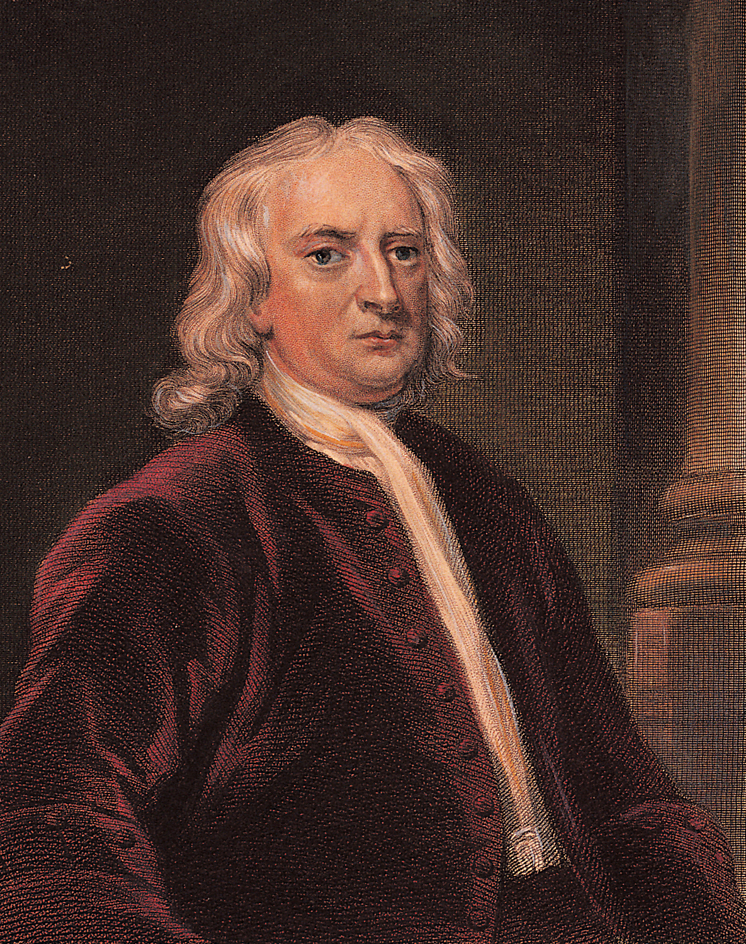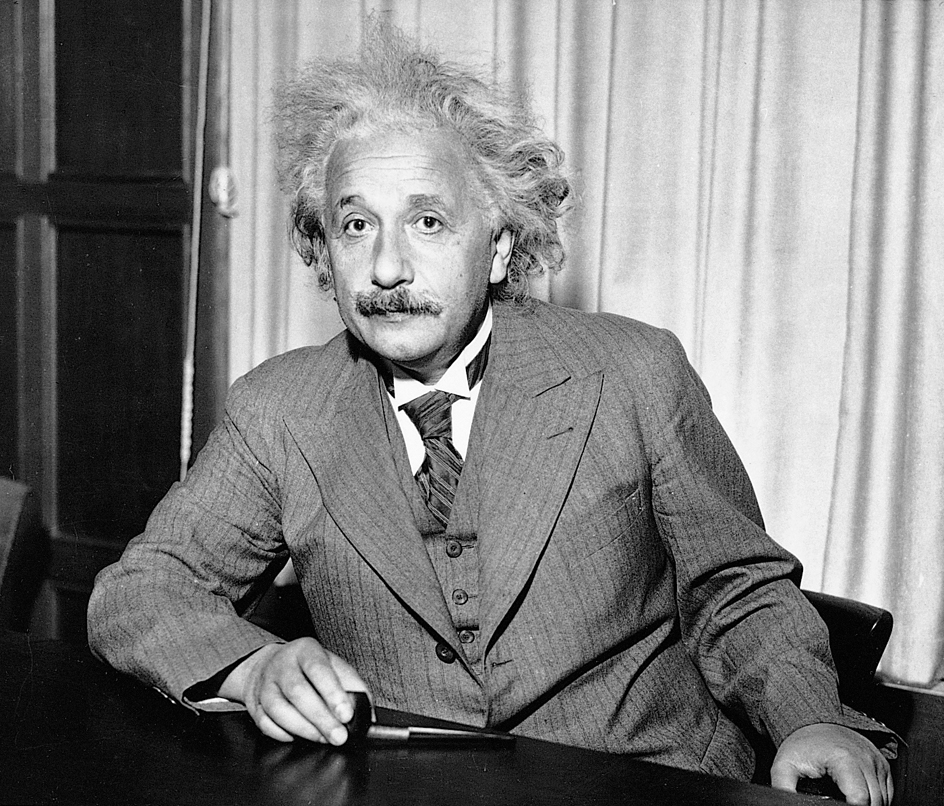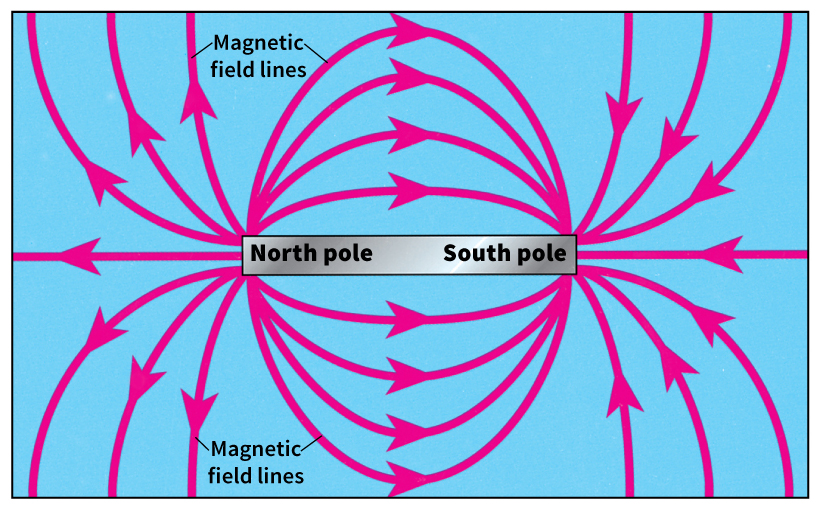Force is a push or a pull. In your everyday life, you experience a variety of forces. You apply a force to a ball when you throw it up in the air. As the ball rises, the force of gravity slows it down. As the ball descends, gravity makes it fall more rapidly. When you catch the ball, it applies a downward force to your hands. But your hands apply an upward force to the ball to stop it.
Characteristics of force
Size and direction
are two essential characteristics of force. You might push a box across the floor with a force that has a size of 45 pounds (200 newtons) and is directed toward the south. Because force has both a size and a direction, scientists call it a vector quantity. Physicists usually indicate a vector quantity by a letter with an arrow over it. Scientists also refer to the motion of a body in terms of a vector quantity—a combination of speed and direction known as velocity. An automobile might have a velocity of 60 miles (100 kilometers) per hour eastward.
Overcoming inertia.
A force acts by overcoming inertia, which is a property of all matter. The English scientist Isaac Newton described inertia in 1687, in the first of three laws of motion. He said that, due to inertia, a body in motion continues to move with a constant velocity, while a motionless object tends to remain still.
Acceleration.
Physicists refer to any change in motion—whether the change involves speed, direction, or both—as an acceleration. The force necessary to accelerate an object by a given amount depends on the object’s mass (amount of matter). The greater the mass, the greater the force must be.
Newton described the relationship between force, mass, and acceleration in his second law of motion. This law can be expressed as:

In this equation, F is force, m is mass, and a is acceleration. The arrows above the letters indicate vector quantities. In the International System of Units (SI), the modern metric system used by scientists, force can be given in newtons, mass in kilograms, and acceleration in meters per second per second.
Concurrent forces.
In most changes of velocity that we observe, more than one force is acting on the accelerated object. Such concurrent forces produce a single net force, also called a resultant force. Suppose you are part of a tug-of-war team. If your team pulls harder on the rope than the opposing team does, there will be a net force in your direction, so the rope will accelerate in your direction. But if the two teams pull equally hard, the forces will be in equilibrium. The rope will not move.
Kinds of force
All known forces are forms of four fundamental forces—(1) gravitation, (2) the electromagnetic force, (3) the strong force, and (4) the weak force.
Gravitation
was the first of the fundamental forces to be understood scientifically. Isaac Newton explained this force in his law of gravitation, which was published in 1687. Scientists accepted Newton’s law until 1915, when German-born physicist Albert Einstein proposed the general theory of relativity. Einstein’s theory did not totally contradict Newton’s law, but rather expanded upon it.
Newton’s law of gravitation
was a result of Newton’s thinking about the orbits of the planets. He reasoned that the planets move in their orbits because a force is applied to them. If there were no force, the planets’ inertia would make them move in straight lines and fly off into space. Newton showed that what keeps the planets in orbit is the force of gravity. He also showed that gravitation is universal. That is, it acts in the same way between any two objects that have mass—between Earth and the sun as well as between an apple and Earth.

The force of gravity between objects arises from the attraction between the particles of matter that make up the objects. These particles—unknown in Newton’s time—include atoms and the subatomic particles of which the atoms are composed. All but the simplest atoms have a nucleus composed of protons and neutrons, with electrons whirling about the nucleus. Protons and neutrons, in turn, consist of particles called quarks; each proton or neutron is composed of three quarks.
Newton’s law of gravitation gives the size of the force of gravity as F = G N m 1 m 2 ÷ d 2, where F is the force, G N is a number known as the gravitational constant or Newton’s constant, m 1 and m 2 are the masses of the two objects, and d 2 is the distance between them squared—that is, multiplied by itself. The direction of the force is along a straight line between the objects.
The gravitational constant has a value of 6.67 × 10-11 newton-meters squared per square kilogram. If the number were written out, the first 6 would be preceded by a decimal point and 10 zeros. The unit of measure for the constant, newton-meters squared per square kilogram, makes the force come out in newtons when mass is given in kilograms and distance in meters.
The equation shows that gravity becomes weaker as the distance between the two objects increases. The force weakens as the square of this distance. Thus, if the distance triples, the force becomes one-ninth of its original size. The equation also shows that the force becomes larger as the mass of either object gets larger. So, if the mass of one of the objects triples, the force becomes three times as large.
Einstein’s theory of general relativity
overcomes faults in Newton’s law. One of these faults is an incorrect description of the acceleration of objects at velocities close to the speed of light. But for most calculations involving slow objects, it is not necessary to consider relativity.

Einstein’s theory is difficult to understand because it describes processes that we cannot observe in daily life. The theory states, for example, that matter and energy modify both space and time, and that this modification is the origin of the gravitational force. According to a simplified explanation, any object that has mass “curves” or “warps” the space near itself. If another body travels past this object, the body will follow the curvature, thereby moving toward the object. Newton’s law—which does not allow for a curvature of space—would say that the traveling body will change direction due to a force.
The electromagnetic force
consists of two parts: (1) the electric force and (2) the magnetic force.
The electric force
is an attraction or repulsion between objects that carry an electric charge. Electric forces between subatomic particles play a major role in our everyday lives. For example, these forces create chemical bonds, attractions that hold atoms together in molecules. In addition, electric forces between molecules hold objects together.
The equation for the size of the electric force is F = kq 1 q 2 ÷ d 2, where F is the force in newtons, d is the distance in meters, and q 1 and q 2 are the charges in coulombs. One coulomb is the amount of charge flowing through a cross section of wire in a current of one ampere. The k represents a number that makes the force come out in newtons. Its value is roughly 9 billion newton-meters squared per square coulomb. The direction of the force is along a straight line between the two objects.
The electric force is similar to the gravitational force. Both forces weaken as the square of the distance between the objects. In addition, the force becomes larger as the charge of either object gets larger.
There is a major difference, however, between the gravitational and electric forces. Gravity is always attractive—that is, it always pulls objects together. The electric force does not. Objects that have opposite charges attract each other, while objects with like charges repel each other. So a proton, which carries a positive charge, attracts an electron, which is negatively charged. But protons repel one another, and so do electrons.
There is another major difference between the two forces: The electric force between two oppositely charged subatomic particles is much larger than the gravitational force between them. For example, the electric force between two electrons is about 1035 times as large as the gravitational force between them. The number 1035 is scientific notation for a 1 followed by 35 zeros.
What is true on the tiny scale of atoms and molecules is not true, however, on the huge scale of the sun and planets. The electric force between Earth and the sun is much smaller than the gravitational force between them. The gravitational attractions between the particles that make up Earth and those that make up the sun simply add up to equal the attraction between the two bodies. But the electric forces between the particles do not add up because each of those bodies has almost exactly the same number of protons and electrons. Thus, the sun’s protons attract Earth’s electrons, and the sun’s electrons attract Earth’s protons. But these attractions are offset by the repulsion between the sun’s protons and Earth’s protons and the repulsion between the sun’s electrons and those of Earth.
The magnetic force
that is used in everyday objects arises from two sources: (1) the combined magnetic forces of “miniature magnets” and (2) the movement of electrons through wires as electric current.
Electrons, protons, and neutrons are miniature magnets—and so are many kinds of atoms. Such objects act together in a refrigerator magnet to produce a large enough force to hold a photograph against the refrigerator. In an electric motor, electric current in wire coils creates a magnetic force that drives the motor. Each coil is part of an electromagnet, a device that becomes a magnet when the current flows.
A magnet applies force by means of a magnetic field. Physicists define a magnetic field as a region of space in which a moving, electrically charged object would experience a magnetic force. The magnet creates the field, and the field, in turn, applies the force to the object.
The size of the force depends on the amount of charge carried by the object, the velocity of the object, and the strength of the field. If any of these three factors changes by a given amount, the force will change by a proportional amount. For example, if velocity is tripled, force also will triple.
The direction of the force depends on whether the object has a positive or a negative charge, the direction in which the object is moving, and the direction of the magnetic field. Scientists define the direction of the field as the direction of lines of force flowing out of the north pole and into the south pole of the magnet.

The directions of motion, field, and force are at right angles to one another. For example, if a positively charged object is moving northward and the direction of the field is toward the east, the field will accelerate the particle vertically downward. If the object is negatively charged, the field will accelerate it vertically upward.
The strong force
holds protons and neutrons together in atomic nuclei. The protons are so close to one another that there is a huge electric repulsion between them. The strong force overcomes this repulsion. If there were no strong force, only one chemical element could exist—hydrogen, with one proton in its nucleus.
The strong force holds quarks together in protons and neutrons much as the electric force holds electrons and protons together in atoms. The strong force holds protons and neutrons together in nuclei much as the electric force holds atoms together in molecules.
The weak force
can change one type of particle into another. For example, in the main process by which the sun produces energy, the weak force changes a proton into a neutron. It does this by emitting (sending out) a particle called a W+. This particle carries off the proton’s positive charge, then breaks apart into a positively charged positron and an electrically neutral neutrino.
The weak force also takes part in a kind of radioactivity known as beta decay. In the most common form of this process, a neutron in a nucleus changes into a proton. The neutron emits a W– particle, which then breaks apart into an electron and an antineutrino.
